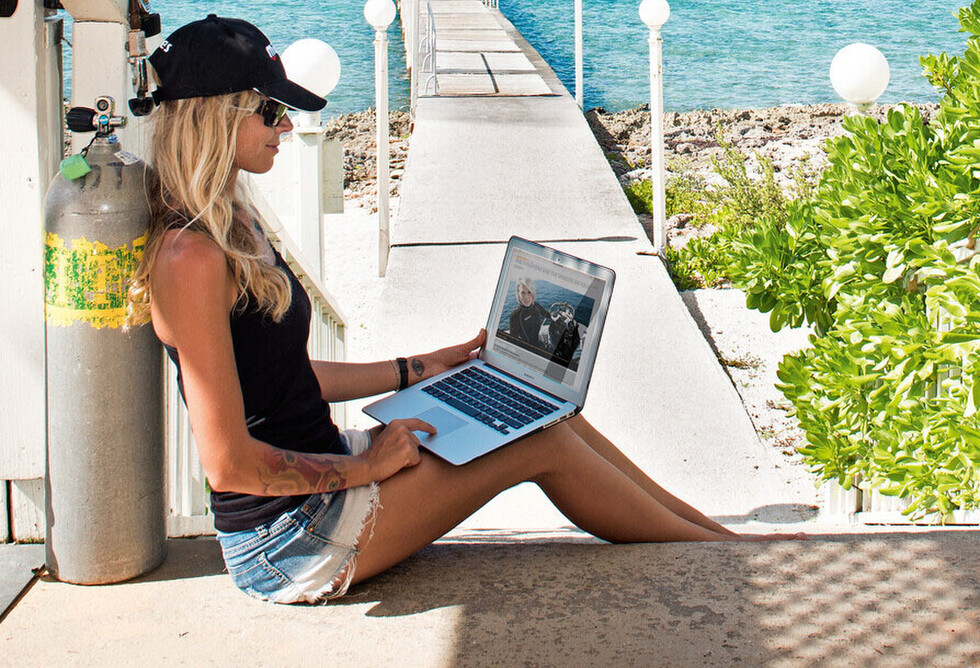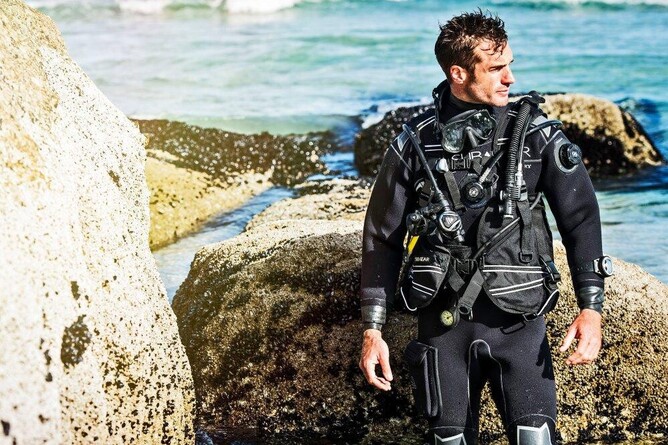Drysuit diving may be the answer
Does the idea of shivering your way through a dive make you want to stay on dry land? If you want to try cold-water diving but without blue lips and excessive neoprene, drysuit diving is the answer! There are some exquisite cold-water diving spots around the world, all waiting to be discovered. Drysuit diving is a little different to regular recreational diving, so we have put together a little guide about what to expect from drysuit diving, how to choose the perfect drysuit, and where to go drysuit diving.
When to use a drysuit and how they work
Drysuits are suitable for cold-water diving, multiple dive days, or tech diving where you will be underwater for a long time. There is no set rule on what temperature the water should be when you switch to wearing a drysuit because everyone feels the cold differently.
As a rough guide, around 60°F (15°C) is usually when divers switch from a wetsuit to a drysuit for recreational diving
Drysuits are different to wetsuits in that they keep you completely dry while you are diving. The drysuit connects to your air tank so that you can add a little air to the suit. This makes up for the pressure which will squeeze the air space in the suit as you descend. Adjusting buoyancy with a drysuit can be a little tricky at first but you soon get used to it, and by the end of your dry suit diving specialty you will be able to do it easily.
What to expect from drysuit diving
Drysuit diving opens up a world of diving opportunities; imagine exploring Arctic destinations or spotting penguins in Chile’s cold waters. Drysuit diving can also keep you warm on multi-dive days when you do not want to spend your time getting in and out of a cold wetsuit. Many divers wear drysuits at warm-water destinations when they are diving multiple times a day on a liveaboard.
The SSI Dry Suit Diving specialty program is the best way to become a drysuit diver and learn the ins and outs of drysuit diving techniques. You will learn how to dive safely and comfortably in a drysuit.
Your specialty instructor will explain the benefits of using drysuits and how to deal with drysuit diving emergencies, which are unique to this type of diving. Upon completion, you will earn the SSI Dry Suit Diving specialty certification.
How to choose the perfect drysuit
Firstly talk to someone who is diving dry suits on a very regular basis - a dive shop salesman who never dives, does not have your best interest at heart, just your wallet, be warned!
Just like finding the perfect fitting mask, finding a drysuit that fits you well is important. If the suit is too big then it can leak or feel baggy, which causes drag. If it is too small, it will feel tight, restricting, and uncomfortable while you are diving.
Taking a drysuit speciality will allow you to try out a drysuit and see what fits you best. You will then practice using the drysuit under the supervision of an experienced instructor, who can show you how to use it in the best way and make sure you stay safe.
So, how do you choose the perfect drysuit?
There are two main types of drysuits:
Membrane/laminate drysuits are thin and do not offer much insulation; they are designed just to keep you dry. You can then choose to wear warm undergarments underneath to stop you from getting cold.
Neoprene drysuits are essentially very thick wetsuits. They are warmer (but also a lot heavier) than membrane drysuits and are more streamlined.
Both styles have water-tight zips and seals to keep cold water from entering your suit while you dive.
Things to consider when buying a drysuit:
If you are traveling frequently, a membrane drysuit might be the best option as it is much lighter to pack and carry. If you are drysuit diving close to home, perhaps a neoprene drysuit will suit you better. Consider where you will be using your drysuit to make the best decision.
Other things to consider include:
The number of pockets.
Where the pockets are positioned on the suit.
The zipper placement and how easy it is to reach.
Whether or not you will require a P-valve.
Top places to go drysuit diving
Once you have completed your Dry Suit Diving specialty and bought your very own cozy drysuit, you will want to start diving in it! If you are looking to use your drysuit for cold-water diving, why not try Aotearoa (New Zealand)?
We hope we have inspired you to brave the cold and start drysuit diving!
For more information about the extensive, profession Dry Suit Diver training programs we run, please CLICK HERE>
and for expert honest advice, please call us to discuss your dry suit requirements, we would love to help!

